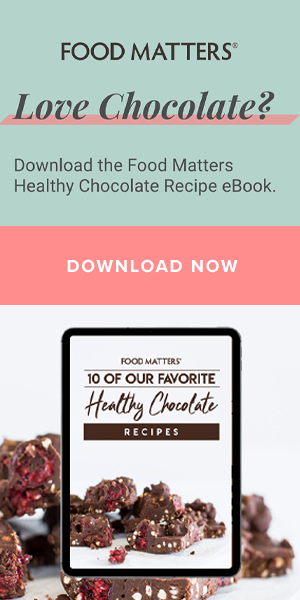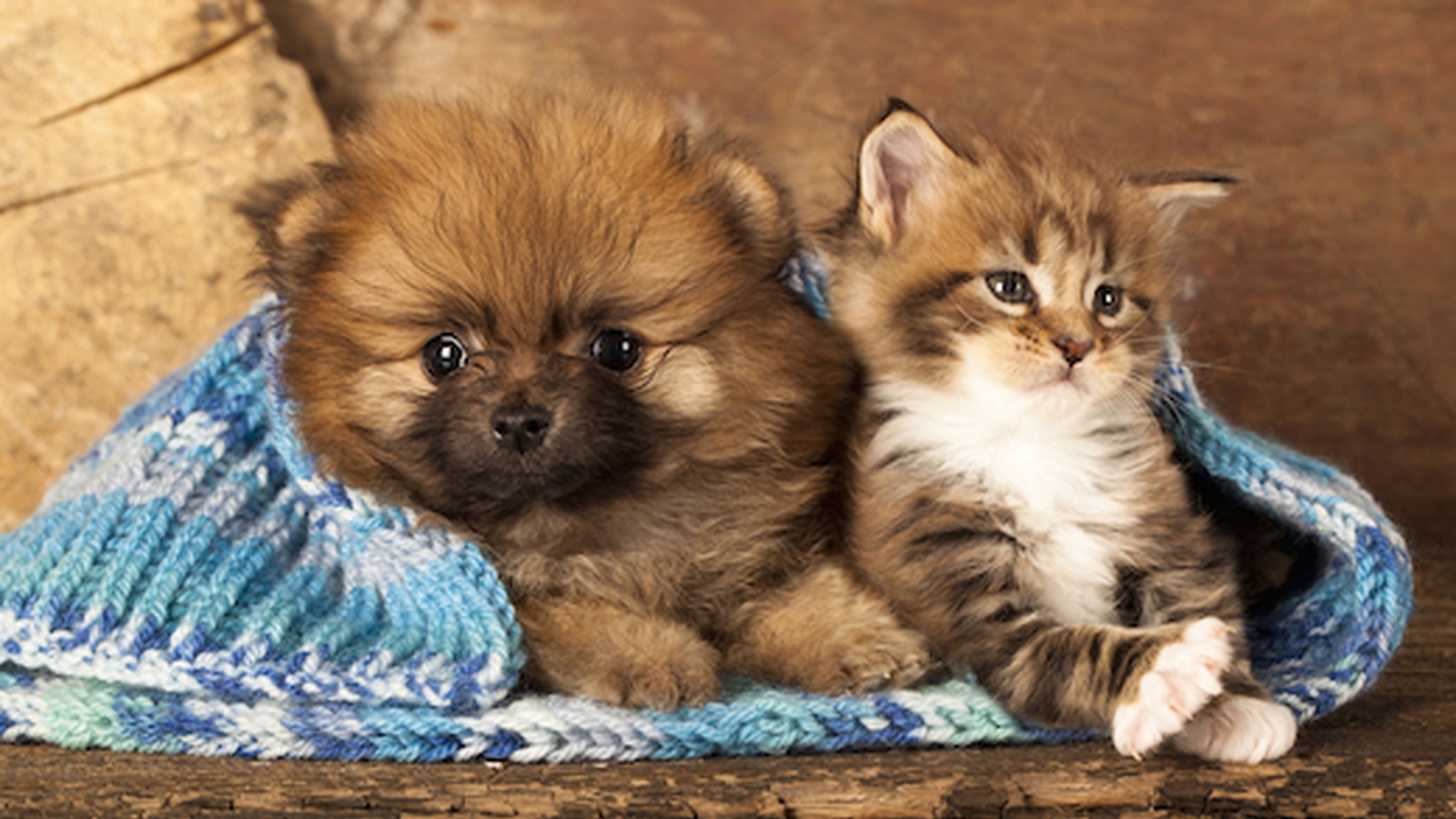Cats and Dogs - What Do You Feed Them?
If you’re like most pet owners, your four-legged companion is a beloved member of your family. And just like the humans in your household, you want to give your pet every opportunity for a long and healthy life.
What you might not know is that despite advertising claims, the majority of commercial pet foods are not optimally healthy for your dog or cat. Just as most processed, convenient “people food” is devoid of nutritional value, so is much of the dead, dry pet food sold commercially today.
The pet nutrition industry is very similar to the human food industry – full of hype and false claims, peddling inferior nutritional choices. Much of the so-called “healthy pet foods” on the market contain inferior meat meals, cheap grains like corn and soy, fillers, by-products, food coloring, pesticides, preservatives, and other contaminations.
Case in point: the widespread contamination of melamine (a chemical used in the production of plastics, which imitates protein) rocked the pet food industry not so long ago, and led to thousands of deaths and illnesses. More than 5,600 products by dozens of pet food makers – everything from cheap supermarket brands to prescription-only food – were recalled in the process.
Good nutrition is a fundamental requirement to keep your pet in top physical shape, and improve his or her chances of resisting disease and other degenerative conditions. And when it comes to protein levels and organ health, the more we learn, the more we realize how little we knew before.
Many Commercially Available Pet Foods Can Destroy Your Pet’s Health
“Pet” foods are actually a relatively new addition to the marketplace, only filling a consumer niche for the last 100 years or so. Many proactive, integrative and holistic veterinarians have long recognized the short falls of many commercially available pet foods. Unfortunately, most widely available pet foods and even many of the brands conventional vets recommend do not contain clean, inspected ingredients, nor are they biologically balanced for your domesticated carnivore (cat) and scavenging carnivore (dog).
Common symptoms associated with regular consumption of commercial pet foods include:
- Diarrhea
- Increased flatulence
- Dull coat
- Intermittent vomiting
- Prolonged scratching
During the 1980’s and early 1990’s, frustration with low quality food led to the emergence of improved dry pet foods. This higher quality kibble was baked rather than extruded, and contained more diverse ingredients and USDA inspected meats. During this time pet owners also began to realize the benefits of home cooked diets, where they could control the quantity and quality of ingredients added to their pets’ meals.
However, although these changes addressed some of the quality control issues, and began to address the biological appropriateness of pet food ingredients, it did not address the fact that companion animals were still consuming an entirely dead diet, devoid of all the benefits living foods have to offer. Dogs and cats evolved to consume living, unprocessed foods, and once you remove the raw food, you disrupt nearly every important biochemical pathway in their body. This is a prescription for disaster, and maintaining your pet on completely cooked and refined foods can clearly impact their organ health.
In fact, a growing number of veterinarians state that processed pet food (kibbled and canned food) is the number one cause of illness and premature death in modern dogs and cats. In December 1995, the British Journal of Small Animal Practice published a paper contending that processed pet food suppresses animals’ immune systems, and causes:
- Liver disease
- Kidney disease
- Heart disease
- Other diseases
Another case in point: In one animal study, performed by Dr. Kollath of the Karolinska Hospital in Stockholm, young animals that were fed cooked and processed foods initially appeared to be healthy. But once they reached adulthood, they began aging quicker than normal and developed degenerative disease symptoms. A control group raised on raw foods aged less quickly and did not develop any degenerative diseases!
Why Your Pet Needs RAW Food
The introduction of commercially available raw food diets in the late ‘90’s offered tremendous additional health benefits to pets everywhere, because many varieties combined USDA inspected meats with human edible-quality vegetables and fewer grains, which is more biologically appropriate.
Several AAFCO approved homemade recipes also became available and contained options for living food additions. To argue whether raw food diets are appropriate for dogs and cats is moot; they have thrived consuming a variety of small prey for thousands of years!
Wild animals also avoid many of the degenerative health issues that plague our current domestic pet population. To suppose that your pet’s health would suffer any less than your own from consuming a highly processed diet, filled with corn and other denatured ingredients, would simply be foolhardy.
Of course, this should also be our first choice for our patients, as veterinarians.
The Two Main Problems with a Dry Food Diet
The biggest concern I hear about not feeding dry food is, “But what about their teeth?”
Remember: eating crunchy granola doesn’t brush or clean your teeth. You have to brush your teeth. Likewise, eating crunchy kibble doesn’t brush or clean your pet’s teeth. You still have to brush your pet’s teeth. So please don’t use this rationale to feed your pet a diet of mainly dry foods.
There are the two major problems with an entirely dry food diet.
- Protein quality
- Moisture content
Protein quality -- For years, protein got a really bad rap. More recently, proactive veterinarians have tried to re-educate pet owners about protein, protein quality, and protein requirements. Contrary to popular belief, protein requirements actually increase as pets age to combat catabolic processes, which can lead to muscle wasting. We have also learned that the biological availability of certain protein sources actually determines how easy or difficult they are to metabolize. For example, snouts and feathers, although 100 percent protein, are not nearly as digestible as lean muscle meat.
The quality of protein your pet eats is critical to reduce organ stress over time. The scary truth is that the majority of commercial pet foods on the market today are using rendered meats that are not approved for human consumption. Because kibbled foods made with these poor quality meats are so difficult to digest and assimilate, they can actually cause organ disease.
Moisture content -- Moisture content is another problem inherent in a mainly dry food diet. Our carnivorous companions were designed to consume non-dehydrated foods. Species appropriate diets -- foods free of corn, wheat, rice and soy -- formulated in their biologically correct form, meaning raw or minimally processed, with non-denatured proteins, contain all of the moisture needed to process the food with minimum metabolic stress.
Did you know that the natural diet of dogs and cats is up to 70 percent water?
That’s right: rabbits and mice, like our bodies, are primarily composed of water. Our pet’s bodies have evolved to consume a diet that is rich with water, not dehydrated, and not cooked.
When food is cooked and dehydrated (which is how kibble is produced), several things happen, the most detrimental of which is that the food becomes dry. Far too dry to be healthy.
This requires your pet’s body to provide sufficient moisture to reconstitute the food in their digestive tract. Although some animals may make a noble effort to consume enough water, many animals, and most cats, don’t.
The Association of Feline Practitioners recommends owners feed cats a diet of primarily canned foods (vs. dry foods) for this very reason.
What are the most notable physiologic changes when our companion animals consume a dehydrated, poor quality protein diet?
- Kidney stress
- Liver stress
- Metabolic stress
A lifetime of minor dehydration is stressful to multiple organ systems, but most notably the kidneys. It’s important to realize that this can easily be remedied by feeding canned or living food diets, and can easily be avoided by feeding foods that have not been dehydrated (dry food).
My Diet Recommendations
The convenient alternative to our pet’s ancestral diet looks great at first glance, but poses significant health risks if fed as a sole diet indefinitely. Remember, our pet’s bodies are resilient. They can eat a variety of suboptimal, metabolically stressful foods on occasion and be fine, but because it’s our goal to provide a diet that most closely fits our companion’s biological requirements, we don’t recommend a lifetime of kibble.
Our goal is to provide a diet that mimics our pets biological nutritional requirements as closely as possible…in this case it means rethinking the “lifetime of dry food” theory. Thankfully, we can make one healthy lifestyle change at a time, which optimizes our pet’s chances of achieving abundant health. Next time you go to your local organic butcher ask for some chicken thigh fillets, with or without bones. When you get home give your pet the whole thigh in its raw state without chopping it up. It may be easiest to give this to them outside so they can take their time to chew on it and get it down. The bones in their raw form are good for their teeth and the flesh in its raw form is easy to digest and moisture rich.
If you are unable or unwilling to feed your pet a species appropriate, nutritionally balanced, raw food diet, then I strongly recommend you compromise with the next best choice: USDA approved canned foods.
My last choice would be a dry food (kibble), made from human-grade ingredients with little to no grains, and LOTS OF WATER.
I’m not anti-kibble. But it’s important to recognize why you choose to feed kibble. Most pet owners feed kibble for convenience, or because your pets like it. But the truth is, it’s frequently not species appropriate, and can seriously damage your pet’s health.
Fortunately, once you recognize it’s not the healthiest choice for your companion it makes it easier to gently begin transitioning to a more biologically optimal food.
The Pottenger Cat Experiments
In the 1940's Francis M. Pottenger (not Pottinger) M.D. began a ten year study using 900 cats to determine what effects processed foods have on the body, and to examine the genetic propensity of passing degenerative disease traits from generation to generation. The cats were divided into five groups with two of the groups fed raw whole foods and the other three groups cooked enzymeless foods. The cats were observed over a four generation period and the following results were documented by Doctor Pottenger:
POTTENGER CAT EXPERIMENT SUMMARY
| GROUP | A | B | C | D | E |
| FOOD FED | Raw meat | Raw milk | Pasteurized milk | Evaporated milk | Condensed milk |
| 1st Generation | Remained healthy | Remained healthy | Developed diseases and illnesses near end of life | ||
| 2nd Generation | Remained healthy | Remained healthy | Developed diseases and illnesses in middle of life | ||
| 3rd Generation | Remained healthy | Remained healthy | Developed diseases and illnesses in beginning of life; many died before six months of age; | ||
| 4th Generation | Remained healthy | Remained healthy | No fourth generation was produced: either third generation parents were sterile, or fourth generation cats were aborted before birth | ||
|
Source: Pottenger's Cats, a Study in Nutrition
|
|||||
Pottenger's cats study gives insight into why children today are getting degenerative diseases that used to only show up in humans at an age of 50 years or older.
What's alarming about this study is that the levels of health get progressively worse with each generation. The four generations of cats were observed over ten years. It takes approximately 20 years to beget a generation of humans so the same study would take over 80 years in people . Of course no such study is being done, but it's easy to observe that there is a tremendouse increase in heart disease, cancer, arthritis, and autoimmune diseases over the last eighty years. There is however a decrease in infectious disease so we may be living slightly longer. Let's look a little closer.
GENETIC POTENTIAL
Diseases are not inherited; rather only the tendency or potential of a disease is passed on from parents to offspring. The disease tendency is transferred by way of the genetic code. A genetic tendency is only a potential disease though. A genetic weakness does not have to manifest as a disease unless there are factors that exploit that weakness (poor diet, for example).
These genetic weaknesses will get worse with each succeeding generation if they continue in a enzymeless nutrient poor diet. The study proved that genetic weakness becomes more evident with each generation, but more importantly, that there comes a point when it becomes totally out of control. This is evident in the fourth generation.
Here's what Dr. Pottenger said, "While no attempt will be made to correlate the changes in the animals studied with malformations found in humans, the similarity is so obvious that parallel pictures will suggest themselves."
Discover how to eat your medicine to heal your gut, eliminate bloating, skin issues and hair loss as I share seven nutrition principles in this free masterclass. Running for a limited time only.








